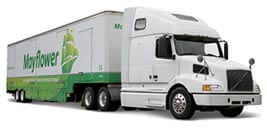METCALF MOVING BLOG
How To Prepare For a Move With a Toddler
Moving is one of the most stress-producing events we face; moving with children often adds a layer of anxiety. Moving with toddlers may seem easier than moving with teens; however, even younger children require an adjustment time. By preparing well ahead of your residential move, you can help your toddler thrive in the new environment.
How Moving Affects Toddlers
Toddlers do best with routines, and moving disrupts those routines. Toddlers can become disoriented with all the changes around them. Unlike older children and adults, however, they lack the language to express their feelings. They show their anxiety by:
- exhibiting unusual behaviors such as increased aggression, shyness, or clinging
- regressing in terms of potty training, thumb-sucking, or similar behaviors
- eating less or complaining of stomach aches
- engaging in anxious behaviors such as twirling their hair or licking their lips.
Anxiety before, during, and after the move also can disrupt a toddler’s sleep. They may begin to grind their teeth or have nightmares beforehand. After the move, they may wake frequently or resist going to sleep, especially if their new room looks or sounds very different from their old one.
Before the Move
You can relieve some of your toddler’s anxiety by preparing them well in advance. Talk to them about what is happening in simple language. Tell a story or use toys or stuffed animals to act it out. Explain to them that their toys will go with them to their new home.
Resist the urge to put new furniture in the child’s room; the old things will bring comfort. Take them through the new home room by room. Show them the playground and take them to their new daycare center to meet their caregivers if you’ve chosen one. That helps them know what to expect.
Maintain a consistent routine, including maintaining your activities with them at the same time each day.
Help them box up their own toys and make sure that box is one of the first you unpack in your new home.
On Moving Day
Offer the child some choices; for example, do they have a special toy they’d like to keep with them? Take them through each room in the old house to say “good-bye.” Hire professional movers so that you can be available for your child. If you still feel you will be too distracted, hire a sitter.
Unpack a box of the child’s favorite toys first when you arrive in your new home. Then, organize the child’s room as quickly as possible. Try to keep routines as similar to those in the old house as possible. Don’t forget to baby-proof your new home quickly, too.
After the Move
Don’t plan anything disruptive, such as a vacation, the first few weeks you are in your new home. Stay home for the first few days if possible. If you can’t do this, spend some extra time with your child daily for the first several weeks.
Be patient. Pick your battles and accept that your toddler won’t follow some of your rules right away. Ask for help if you need it to get settled more quickly.
If you’ve moved across time zones, don’t try to keep the toddler awake. Instead, help them adjust gradually. Also, get some sun for yourself and your toddler to help your body clocks adjust.
Moving Made Easy
Let pro movers help your family relocate. Movers can help keep the stress levels down so you can focus on allowing your toddler to adjust. Contact us for a virtual survey and quote today.









